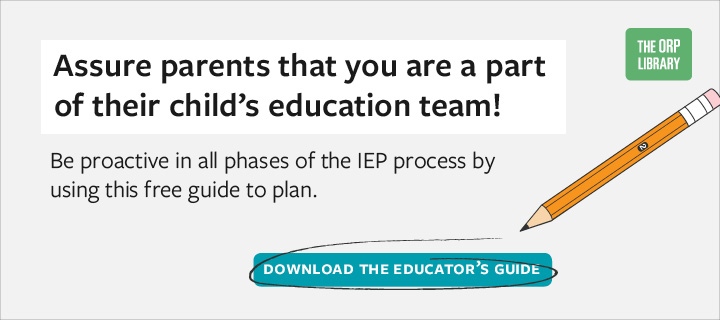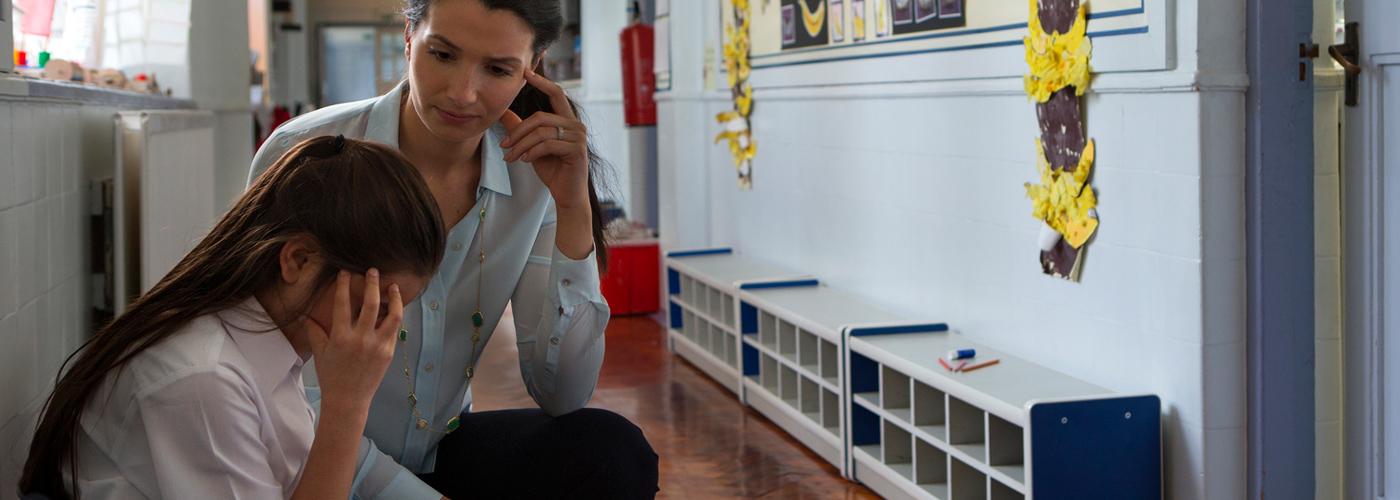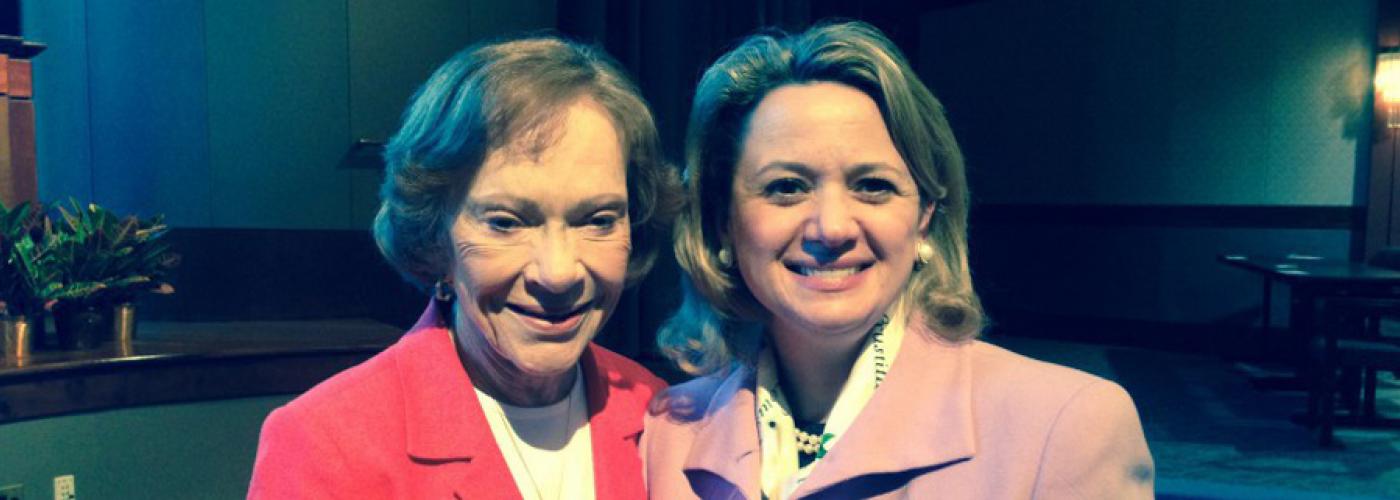The Sometimes Long and Winding Road to an Individualized Education Program
Written By Geoff Campbell
Resource Creation By Bridget Morton
Design By Sunny DiMartino
George cradled his head in his hands and sighed. Every year since he’d begun teaching five years ago, he’d had at least one student whose parents requested that their child be evaluated for a potential Individualized Education Program (IEP). This year proved no different.
He’d just gotten off the phone with Linda. He’d called her to express concerns about Linda’s daughter, Jill, who was in fourth grade but reading at an early second-grade level. She was also struggling with spelling, and her handwriting was difficult to decipher. Linda had been having concerns of her own because of how long it seemed to take Jill to complete her homework or finish reading a book. She’d started doing some research and had learned about special education and IEPs. “I think Jill should be evaluated for a learning disability,” she’d told George.
Although George recognized that it might ultimately be a good idea to have Jill evaluated to find out why she seemed to be struggling with schoolwork—he was willing to do whatever it took to help her—he wasn’t looking forward to the meetings, in which the parents often became angry and stressed.
But then George smiled. Jill was a terrific kid. Linda and her husband, Mike, were fantastic parents, always willing to volunteer in the classroom when needed. George knew he had to do whatever it took to help Jill.
Still, he’d wanted to make sure Linda understood that requesting an IEP team evaluation and getting an IEP, or individualized education program, were two entirely different matters. Besides, there were some initial steps to consider. First they’d need to meet with the school’s Collaborative Support Team, or CST, to discuss Jill’s educational progress and develop some pre-referral intervention strategies to try to increase her achievement closer to grade level.
“If the intervention strategies don’t help, then we’ll meet with the collaborative support team members again, and the team might decide that a referral for an IEP team evaluation is warranted,” George had said. “As a parent you can always request an IEP team evaluation, but it is often best to try interventions prior to a referral, as they might be helpful. Plus, they also document attempts that have been made to help the situation.
“We have to remember that IEP team evaluations and IEPs are not magic wands. Even with an IEP it will take hard work and time for Jill’s academic skills to improve.”
The CST recommended after-school tutoring for Jill, along with in-class, small-group phonics instruction to practice word families. Despite the extra work and attention, Jill’s struggles continued. Throughout the next two months, George called Linda and Mike every Friday to discuss Jill’s progress, taking care always to heap praise and emphasize Jill’s effort and willingness to work hard.
“The effort is there, and her attitude is amazing,” George said in a conference call after two months of using the intervention strategies. “I’m not seeing much progress, though, at least in the classroom. What are you seeing at home when you work with her on academics?”
“When we read with her, she’s still struggling with words like ability, elegant, and plunge,” Linda said. “You said those are third grade words. She even confuses simple words like to and at, and it just breaks my heart to see her struggle so much.”
“She also apologizes so much for being wrong,” Mike said. “It’s almost like she feels she’s letting us down. I always tell her how proud we are of her, but it’s pretty clear that we need to try to figure something else out. I worry she will start self-identifying as a failure at school.”
“So what can we do, George?” Linda asked. “What’s the next step?”
“Well, it’s almost time for the CST to reconvene,” George said. “We said we’d schedule another meeting after a few months. I think it’s time to take our information and data back to the CST, share it with the rest of the team, and take a look at where we go from here. The team, with your involvement as well, might suggest some other interventions and strategies, or might decide it is time for an IEP team evaluation referral.”
Linda let out a deep sigh.
“I just can’t help but feel like this is a lost year,” she said. “Jill deserves better, she tries so hard, and we don’t know how to help her right now.”
The CST meeting was more relaxed than the first one, and not as tense as Linda had expected, for some reason. The assistant principal, school psychologist, school social worker, George, Linda, and Mike reviewed Jill’s records and academic progress, and discussed teacher and parent observations and other data collected after two months of intervention strategies. George came to the CST meeting with academic performance data and classroom observation from himself and Jill’s other teachers.
“Jill puts forth very good effort during phonics instruction,” George said. “Even though she hasn’t shown significant gains in reading achievement, she has great enthusiasm for the work, and is very persistent at completing tasks. She usually handles frustration well, but I have recently noticed more frustration and disappointment when the reading tasks become more difficult.”
“We’ve been seeing that more at home too. I’ve also been trying to put myself in her shoes,” Mike said. “I think I’d be frustrated and angry too if I struggled so much at reading—something that comes easy for a lot of kids. It would take a toll on me and I would probably eventually start really disliking school. Right now, it seems like I’m more frustrated for her than she is for herself. I am worried though, that she will start hating school because it makes her feel bad about herself. I think we all tend to avoid things we aren’t good at. Kids that love school are generally pretty good at it.”
“Your daughter is an amazing kid,” George said. “I’m sure we will find something that works for her.”
The assistant principal suggested that it might be possible to increase after-school tutoring from two to four days a week if the team agreed.
“Mike and I had another idea,” Linda said. “How about testing for special education? An IEP team evaluation?”
The team members all looked at the school psychologist, who handled initial IEP team referrals at the school. “Well, we have tried a number of interventions over a period of time and reviewed her progress to this point,” she said. “It looks like Jill has made minimal academic progress in reading despite the interventions, and if her parents and team are in agreement, it appears as if a referral for an IEP team evaluation for Specific Learning Disability (SLD) is warranted.”
“If we did this IEP evaluation, how long would it take?” Linda asked. “We’ve already lost four months this school year.”
“There is a ninety-day timeline from referral to evaluation meeting,” the school psychologist said. “We would need your signed consent to complete the evaluation and conduct additional testing and assessment. Then the IEP team, comprised of yourselves and the school-based team, will convene to discuss the results and determine if Jill meets the criteria for SLD, as outlined in the Individuals with Disabilities Education Act, or IDEA.”
“Three months before we can get her any real help,” Linda said. “Great. That’s even if she qualifies for these services in the first place.” She cupped her right hand and placed it over her mouth.
George took a deep breath and then said, “We’ll continue to stay in regular contact and try other strategies and interventions so that we can learn more about how to help your daughter.”
After the meeting and the IEP team referral paperwork was completed, George used some of his open prep-time to work with the school’s reading specialist to develop specific interventions for Jill that focused upon increased active engagement, differentiated instruction, and small group instruction. Jill’s response to these interventions, and any changes in reading skills, were then monitored during the course of the next few months. The school increased her phonics instruction to five days a week in the classroom. George spent time with Jill two days a week after school while she listened to an audiobook while following along in a hard copy. The other three days she also continued to meet with a reading tutor after school.
Importantly, George sent emails to Linda and Mike several times per week about Jill’s progress, even if it was limited, and gave them suggestions on what they could do at home to support learning. George knew it was crucial to actively engage and inform Jill’s parents in understanding how to support her progress toward the goals.
As the IEP team gathered at the IEP team evaluation meeting, Linda shared a nervous smile with George. Mike squeezed her hand as they took seats and waited to hear the results of the evaluation. The IEP team included the parents, George as the regular education teacher, the special education teacher who had overseen some of the testing, the reading specialist, the assistant principal as the local education agency (LEA) representative, and the school psychologist. Linda and Mike sat at the end of the table and stared at the thick packet of paperwork that was in front of each team member.
After introductions, the school psychologist, who served as the IEP team evaluation meeting facilitator, smiled and briefly described the purpose of the meeting.
Each member who had completed a report then reviewed his or her assessment results with the team. The team also discussed Jill’s reading achievement, response to intervention, level of progress, and monitoring data.

After all team members had an opportunity to review their results and answer any questions, the school psychologist reviewed the specific eligibility criteria for Specific Learning Disability. With an understanding of these criteria, the team had further discussion around the entire set of information. After some discussion the school psychologist said, “Linda, Mike, after reviewing the evaluation results and the criteria for Specific Learning Disability, it appears that Jill meets the criteria for SLD as defined under IDEA. More specifically, Jill is demonstrating inadequate achievement and insufficient progress in basic reading skills, reading fluency skills, and reading comprehension. Does everyone on the team agree that Jill meets the criteria for SLD?”
They all said yes—the parents included.
“Is there a cure for this specific learning disability?” Linda asked. “I mean, will she have this her whole life?”
“Children often make gains in reading with specialized instruction in compensatory academic skills, as well as supplemental supports that are included in their IEP,” the school psychologist said.
“Will Jill have to go to a special or self-contained classroom all the time?” Mike asked.
“No,” the school psychologist said. “Jill will receive the majority of special education services in the regular education classroom. She will receive specialized support and instruction from a certified special education teacher who has training and experience with specific learning disabilities.”
“It sounds like our daughter is going to be okay after all,” Linda said, turning to Mike.
“Of course she is,” George said. “We are going to make sure she gets all the help she needs to succeed, and you as her parents will be a part of the process every step of the way.”
This story is part of a series based on the experiences of educators, parents, and the staff of Genesee Lake School, a nationally recognized provider of services for students with special needs. GLS is part of MyPath, an employee-owned family of companies whose mission is to make a difference in the lives of people with disabilities.

Sign Up to Receive New Posts
We promise not to spam you or share your information with anyone. And you can unsubscribe at any time . . . although we hope you stay a while!





